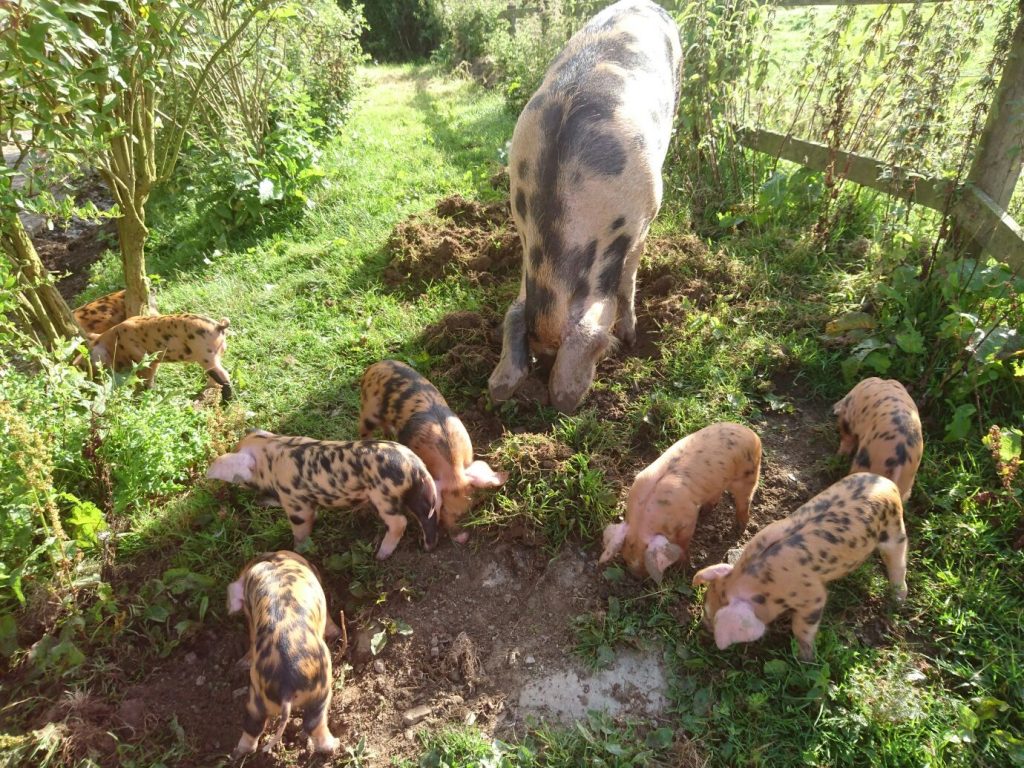
Gilts and sows are suceptible to seasonal infertility during late Summer and early Autumn it is due to the environment, mismanagement and malnutrition over the summer months and leading into the beginning of Autumn. This inturn will delay puberty, post weaning anoestrus (sexual inactivity), infertility and irregular hogging (seasons).
Causes
Seasonal infertility occurs mainly in summer and results from a combination of the effects of day length and high temperature. The ideal day length should be a steady 12-16 hours and this should be maintained year round. Seasonal infertility is most serious where sows are housed with access to natural light (e.g. outdoors) and where light exposure cannot be controlled. Effects are most obvious in the female, but high temperature may also have an effect on semen quality and libido in the boar, which we discussed in a post under the heading “So what do we know about boars”. In addition, there may be reduced conception during the summer, caused partly by the seasonal effect on the sow and partly as a result of reduced semen quality and libido in the boar. A rise in infertility resulting from leptospiral infection may be present in some farms in the early autumn.
Clinical signs
Sows become anoestrous (sexual inactive) for a period of 19 weeks (range 11-30) in late summer and early autumn, but may cycle throughout this period without demonstrating oestrus behaviour. When service occurs, animals may return at 3 weeks or irregularly thereafter. Abortions may also be more common at this time. The combination of all these factors may reduce fertility during the late summer and early autumn. Breeding stock affected by the heat may remain lethargic during the day, to become active again in the cooler part of the day ie: late afternoon early evening. Fertility may be reduced by around 20-25%.
Diagnosis is based on the failure of identified non-pregnant sows to show oestrus at 21 day intervals or within 21-30 days of weaning during the late summer and early autumn. Daily testing using boar exposure can be used to confirm the presence of anoestrus, the vulva should be inspected daily for signs of redness and swelling and sow and gilts can be tested by back pressure. Signs of mounting should be recorded.
Good records are important in identifying summer infertility. Anoestrus can be investigated in an individual by confirming that the animal is not pregnant, examining the ovaries and uterus by ultrasound for evidence of other causes of anoestrus such as inactive ovaries, cysts, retained corpora lutea (a small, transient endocrine gland formed following ovulation) or uterine pus. Blood tests can confirm whether or not cycling is occurring. Boars should be checked for health and semen quality.
Treatment and prevention
The effects of temperature may be overcome in part by boar stimulation and shading of the mating area, cooling of the boar and sow using wallows or sprays and mating early in the morning when temperatures are lowest. The control of light exposure and introduction of a fixed daylight length of 12-16 hours may reduce the effects in housed animals. The provision of additional roughage was useful in one study and there may be a satiety effect. The adverse effects on fertility of boar semen quality can be overcome by the routine supplementation of natural service by artificial insemination, and the effects of summer infertility on production can be overcome by increasing the number of services over the period by 15% in order to maintain farrowings during the period of risk.

The Oxford Sandy and Black Pig Group is UK’s only pedigree pig breed that is registered charity come join us on FB